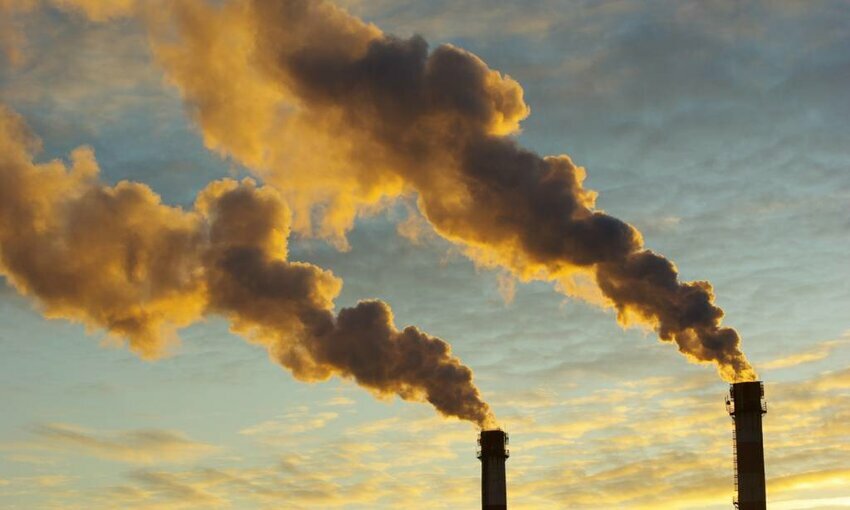 (Credit: Canva Pro)
(Credit: Canva Pro)When the Environmental Protection Agency unveiled its new rules for coal and natural gas plants, it didn’t come as a huge surprise – especially to commercial and industrial users. The agency says it will deliver up to $85 billion in climate and public health benefits over the next two decades and avoid up to 617 million metric tons of CO2 through 2042.
While the coal and natural gas industries will fight this proposed rule, the corporate sector has either been eager to move to renewables or resigned to it. For companies with net-zero goals, it may make their transition smoother and inevitable. However, those relying on coal or natural gas to run their operations fear their energy costs will increase.
The EPA proposed the rule on May 8. It is out for public comment for 60 days. The electric power industry accounts for a quarter of carbon dioxide releases. Only the transportation sector produces more.
“The proposal would result in more than an 80% reduction in carbon pollution from power plants by 2040 compared to 2005 levels, accelerating the country's shift to a clean energy economy. The Inflation Reduction Act's generous tax incentives for carbon capture technology and carbon-free electricity generation sources offers a pathway for electricity producers to keep consumer costs low as they cut emissions from the dirtiest power plants in America,” says Dan Lashof, U.S. director for the World Resources Institute.
Some history: The U.S. Supreme Court knocked down President Obama’s Clean Power Plan that mandated utilities switch to cleaner burning fuels, saying that EPA only has the power to regulate “inside the fence," which means EPA cannot order “generational shifting,” but it can force companies to use carbon capture or cleaner hydrogen fuels.
Hence, the Biden Administration is confident the rule will hold up. But opponents of it will fight it legally, saying it will raise energy costs for industrial users and burden those states dependent on coal and natural gas.
That said, the Inflation Reduction Act gave a hefty tax credit to inspire cleaner burning fuels and modern technologies – carbon capture and sequestration and green hydrogen production. The 45Q tax credits also incentivize developing carbon capture and storage. Natural gas pipelines can already carry 20% hydrogen, but the rule would require them to take far more as time goes on. That will require new investments.
“Because of dwindling utilization, the economic feasibility of (carbon capture) for fossil fuel generation plants is mostly not attractive, even with the 45Q credit,” writes Wood McKenzie. “(As) grids shift towards a higher proportion of renewable power, utilization is projected to decrease for most gas and coal plants.” But the global consultancy adds in Forbes that 45Q does not expire until 2033, giving the technology a fighting chance.
As for hydrogen, there’s some hope. “Blending hydrogen at 30% by 2032 could repurpose existing infrastructure. Blending hydrogen at 96% by 2038 would require new infrastructure, the technology of which is still being developed,” the consultancy adds.
But it is unreasonable to lump in natural gas with coal. The net-zero goal is paramount and not the promotion of specific fuels or the elimination of natural gas. That resource will remain a staple in the home-heating business and be used to firm up renewable resources when the weather does not permit it.
The Energy Information Administration says that natural gas comprises 40% of the electric generation portfolio while coal is at 19% and falling. Natural gas has been replacing coal because it releases about half the emissions when it is burned in a power plant. Wind and solar make up 10%, although their outlook is much brighter. Nuclear energy makes up 19% of the country’s electricity composition while it represents 60% of its carbon-free generation.
Britain’s BP is trying to get out front of the movement: it just set a goal of hitting net zero by 2050 while also saying that it would cut the carbon intensity of its products in half by 2050. Meantime, it is monitoring its sites to control methane leaks – an offshoot of natural gas that is a potent greenhouse gas.
The oil giant says the coal-to-natural gas transition has reduced carbon emissions by hundreds of millions of tons over the last decade. By 2040, it adds, renewable energy will comprise 14% of the electric generation pie – meaning that natural gas will have to kick in and back it up. It also says that the technologies and the economics underlying carbon capture and sequestration are improving.
“We are shifting the company to an integrated energy company,” says Orlando Alvarez, chief executive of BP Energy, at a webinar. “Our portfolio of fuels is changing. But hydrocarbons are core to our strategy, and we believe that natural gas has a future. It can enable the transition. We are making sure that natural gas is in the narrative. This is not a race to renewables but to lower carbon.”
The American Gas Association adds that natural gas delivers three times more energy on the coldest days of the year than the electric system on the hottest days.
But EPA Administrator Michael Regan said ample lead time and compliance flexibility allow power companies and grid operators the time to make sound long-term planning and investment decisions. He added price fluctuations would be minimal – well within historical boundaries.